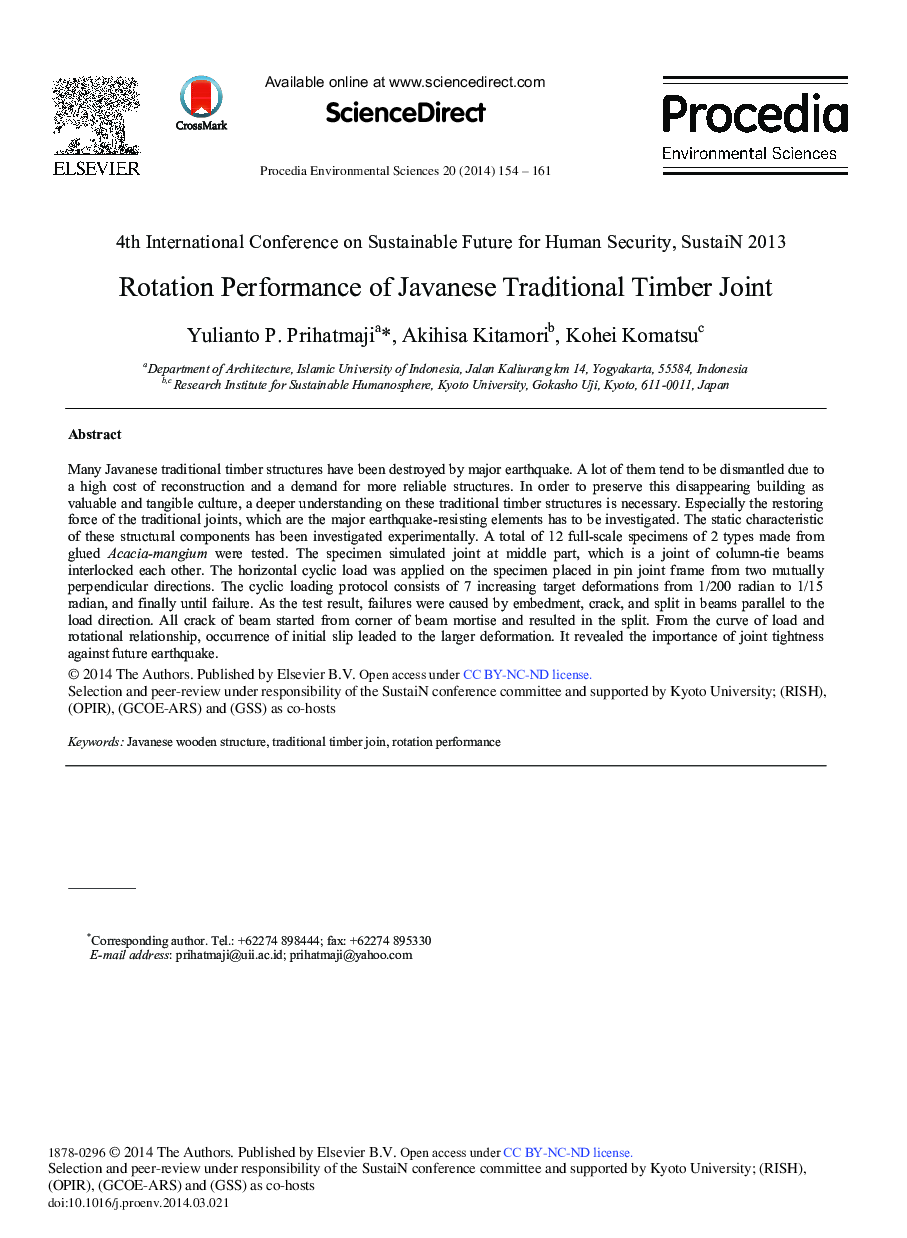| کد مقاله | کد نشریه | سال انتشار | مقاله انگلیسی | نسخه تمام متن |
|---|---|---|---|---|
| 4402213 | 1618624 | 2014 | 8 صفحه PDF | دانلود رایگان |

Many Javanese traditional timber structures have been destroyed by major earthquake. A lot of them tend to be dismantled due to a high cost of reconstruction and a demand for more reliable structures. In order to preserve this disappearing building as valuable and tangible culture, a deeper understanding on these traditional timber structures is necessary. Especially the restoring force of the traditional joints, which are the major earthquake-resisting elements has to be investigated. The static characteristic of these structural components has been investigated experimentally. A total of 12 full-scale specimens of 2 types made from glued Acacia-mangium were tested. The specimen simulated joint at middle part, which is a joint of column-tie beams interlocked each other. The horizontal cyclic load was applied on the specimen placed in pin joint frame from two mutually perpendicular directions. The cyclic loading protocol consists of 7 increasing target deformations from 1/200 radian to 1/15 radian, and finally until failure. As the test result, failures were caused by embedment, crack, and split in beams parallel to the load direction. All crack of beam started from corner of beam mortise and resulted in the split. From the curve of load and rotational relationship, occurrence of initial slip leaded to the larger deformation. It revealed the importance of joint tightness against future earthquake.
Journal: Procedia Environmental Sciences - Volume 20, 2014, Pages 154-161